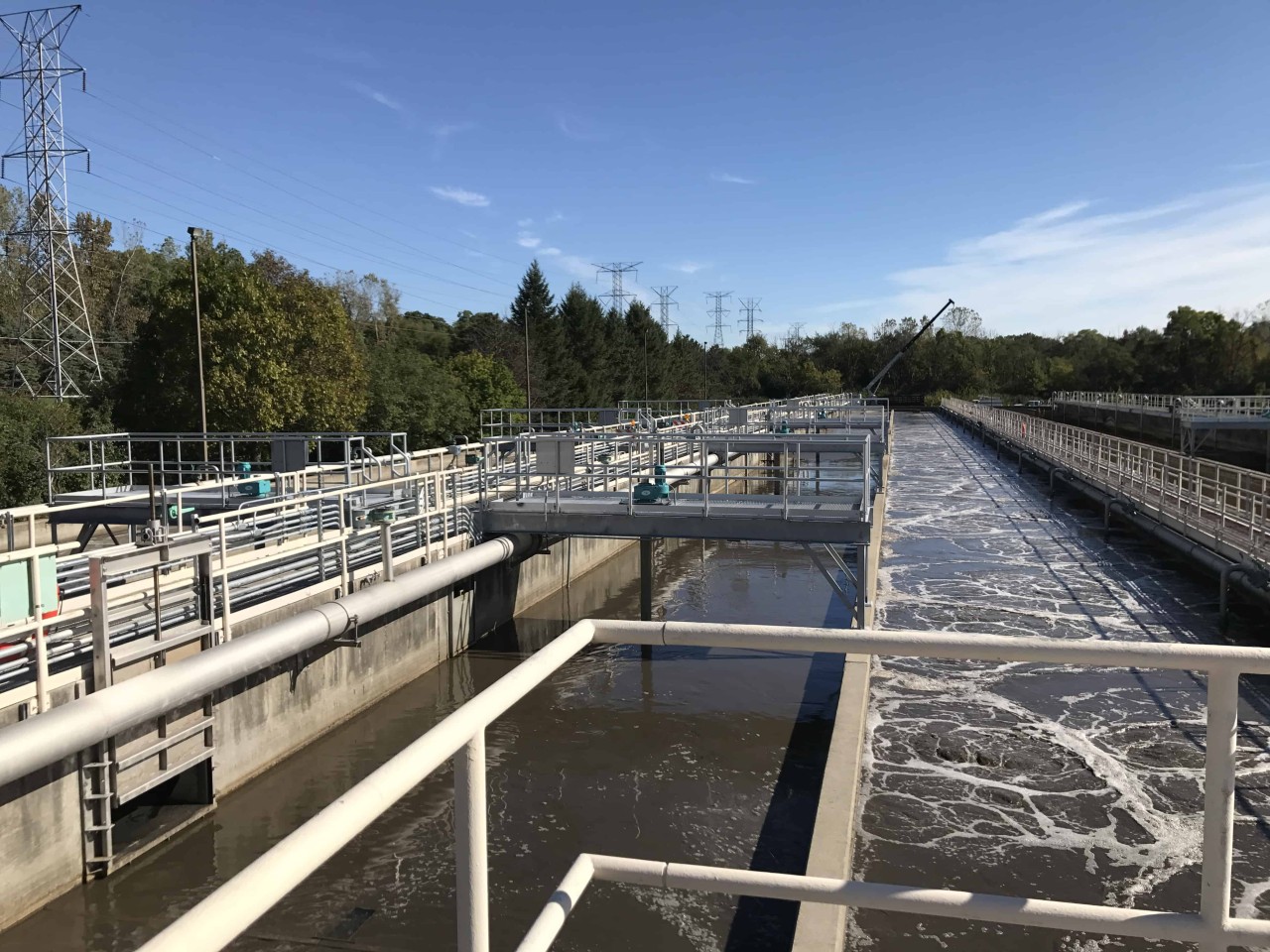Wastewater treatment plants are mandated to include nutrient removal processes that target phosphorous and nitrogen.
While phosphorus and nitrogen are indispensable for the growth of aquatic flora, nutrient-rich wastewater results in eutrophication — an excessive growth of algae and plankton in bodies of water — which impairs freshwater and coastal marine ecosystems. To preserve these vital bodies of water and prevent eutrophication, wastewater treatment plants are mandated to include nutrient removal processes that target phosphorus and nitrogen.
The U.S. Environmental Protection Agency (EPA) has encouraged states to adopt numeric nutrient water quality criteria for Total Phosphorus (TP) and Total Nitrogen (TN). The Illinois EPA has taken it a step further with a regulatory process for developing watershed-specific limits by performing in-depth sampling and modeling studies known as Nutrient Action Reduction Plans (NARPs).
Publicly Owned Treatment Works (POTWs) are required to implement processes that reduce the effluent nutrient concentrations in wastewater to safe levels. Let's discuss different processes for nutrient removal in wastewater treatment and how municipalities can partner with wastewater engineers to optimize nutrient removal methods for each unique POTW.
Nutrient removal in the wastewater treatment process
Conventional wastewater treatment processes, though designed to meet secondary treatment effluent standards, typically do not remove phosphorus and nitrogen and certainly not to the extent required to protect receiving waters. Nutrient removal in wastewater treatment processes can be necessary to help POTWs comply with effluent limits specified within their discharge permits.
Phosphorus removal
The revised EPA standards for TP limits apply to all major wastewater treatment plants (WWTPs) with an average design flow of 1 million gallons per day. The TP effluent limit of 0.5 mg/L is estimated to apply to all major NPDES-permitted POTWs beginning Jan. 1, 2030. This date and target varies depending on the watershed and proposed phosphorus reduction strategy.
The following table highlights the key phosphorus removal methods in wastewater treatment.
|
Removal of phosphorus from wastewater
|
|
Method
|
Description
|
|
Enhanced biological phosphorus removal (EBPR)
|
-
Carbon availability. The nature of the carbon source determines the efficiency of EBPR and rules the competition between PAO and denitrifiers in the system.
-
A calibrated process model. A well-calibrated EBPR process model is a vital tool for assessing the viability of EBPR, optimizing design and troubleshooting.
-
Anaerobic/Aerobic zone volumes. Maintaining adequate anaerobic and aerobic zone volumes is critical for the growth of sensitive PAOs. This is an area of active study as many old assumptions are being challenged.
-
Swing zones. An EBPR process typically has anaerobic zones, anoxic zones (optional),and aerobic zones. To handle variable conditions, it is important to design flexibility into the system. Swing zones are zones that can be aerated or unaerated to provide operational flexibility.
-
Aeration control. Aeration control is critical to enhance the efficiency of EBPR and reduce operating costs. Often blower and aeration systems need to be assessed and modified to achieve target oxygen levels.
-
Impact of phosphorus from sludge recycle streams. The phosphorus compounds recovered from PAOs can be released in the solids handling processes and return to the start of the treatment process via recycle streams. It is important to consider these nutrient loads and assess side stream treatment processes.
|
|
Chemical precipitation
|
-
It removes phosphorus from wastewater by adding coagulants such as calcium, iron and aluminum salts and removing the resulting metal-bound phosphorus via settling or filtration.
-
-
Chemical precipitation for phosphorus removal typically has a lower capital cost than EBPR but often has a higher annual cost when used as a stand-alone system.
-
Chemical precipitation for phosphorus removal is not dependent on carbon availability in the wastewater like EBPR.
-
-
Factors to consider for chemical precipitation of phosphorus:
-
Multiple dosing locations. The required chemical dose depends on the phosphorus concentration in wastewater. Studies have shown dosing coagulants at multiple places in the treatment process can reduce the required amount of chemicals compared with a single dosing point.
-
Chemical options. The most common metal salts used in chemical precipitation are alum (aluminum sulfate), ferric chloride, sodium aluminate, ferrous sulfate, ferric sulfate and ferrous chloride.
-
Impact on sludge volume. With chemical addition, sludge volume can increase significantly and the impact on the solids handling process should be evaluated.
|
|
Combined biological and chemical phosphorus removal
|
-
When chemical addition is combined with EBPR, it is implemented as a polishing/ backup step, usually in the secondary and tertiary treatment processes.
-
-
This approach is often used with a biological phosphorus removal process to add resiliency and redundancy.
|
Nitrogen removal
Total Nitrogen in wastewater is also being discussed in future permitting regulations and watershed-based studies.
The following table highlights the key nitrogen removal processes used during wastewater treatment.
|
Removal of nitrogen from wastewater
|
|
Method
|
Description
|
|
Nitrification and denitrification with activated sludge
|
-
Nitrification. Nitrifiers, including nitrite-oxidizing bacteria and ammonia-oxidizing bacteria, convert the total ammonia in wastewater to nitrate.
-
Denitrification. In an anoxic environment, denitrifiers reduce nitrate and nitrite to nitrogen gas.
|
|
Denitrification filters
|
-
Downflow denitrification filters. Operates in a conventional filtration mode, consisting of media and support gravel. During the process, nitrate is metabolized to nitrogen gas, which is embedded in the filter media.
-
Upflow continuous backwash filters. The influent wastewater flows upward through the filter countercurrent to the movement of the sand bed.
|
|
Anaerobic ammonium oxidation
|
-
The autotrophic anaerobes, called anammox, convert ammonia and nitrite into nitrogen gas under anoxic conditions.
-
-
The anammox process is an area of research for nitrogen removal from ammonium-rich wastewater and side stream treatment.
|
|
Membrane aerated biofilm reactors (MABRs)
|
-
-
Gas-permeable hydrophobic membranes deliver oxygen directly into the wastewater, with a natural layer of microorganisms forming on the oxygen-rich surface of the membrane.
-
Oxygen-rich to depleted profile forms in the microorganism layer, allowing for nitrification and denitrification in one tank.
|
Wastewater plant operators should look for revised TP and TN limits and study requirements in renewed or revised NPDES permits, consult with wastewater engineers to develop treatment strategies, and comply with
nutrient monitoring and treatment requirements.
Partner with Fehr Graham to develop effective nutrient removal methods
At
Fehr Graham, our experienced team of wastewater engineers and operating specialists help develop innovative and customized nutrient removal strategies. We work to understand your community's unique needs and design custom solutions and treatment plans to help your local POTW meet TP and TN limits.
To learn how Fehr Graham can help your community with nutrient removal in wastewater treatment, contact us or call 630.897.4651.
 |
Chris DeSilva, PE, is the Branch Manager of Fehr Graham’s Aurora, Illinois, office. He is passionate about stewardship and shaping communities by providing a strong foundation for growth. Chris plans, designs and manages construction for wastewater projects. He has experience in facility planning, hydraulic analysis, nutrient removal studies, municipal wastewater treatment process modeling, force main design, wetland and waterway permitting and more. Reach him at This email address is being protected from spambots. You need JavaScript enabled to view it. |


